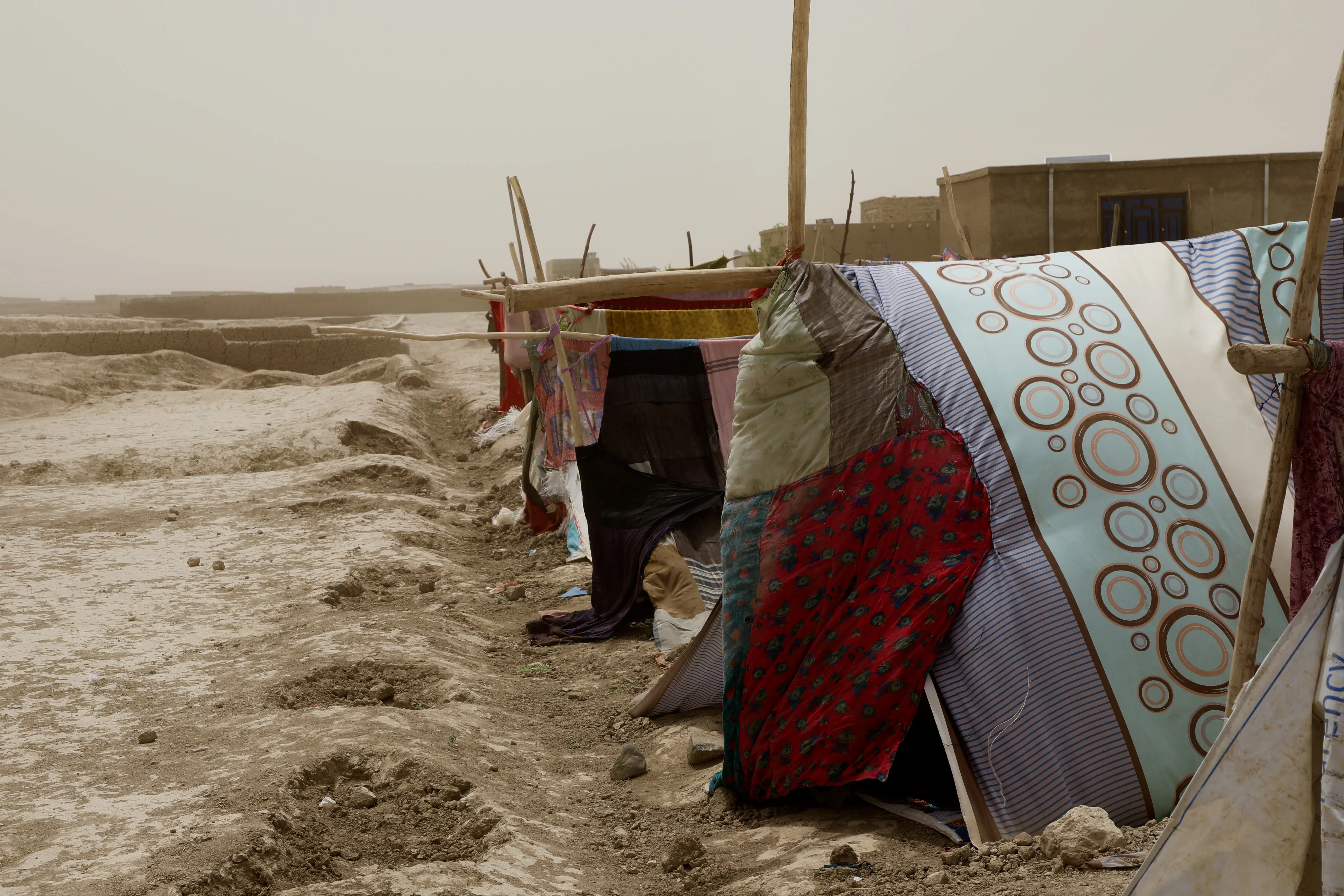Afghanistan Situation
Millions have been forced to flee.
Afghanistan has suffered more than 40 years of conflict, natural disasters, chronic poverty, and food insecurity. Generations have never known peace. Millions of people in Afghanistan are experiencing misery and hunger amid decades of conflict, economic collapse, drought, and freezing wintertime temperatures.
Afghanistan, which has endured repeated crises, faces its darkest time.
Photo: ©UNHCR/Hassib Sediqi
The people of Afghanistan are in the grip of one of the world’s worst crises. Please help us reach refugees and internally displaced people with life-saving aid.

Essential items
including blankets, sleeping mats, kitchen sets, buckets, and soap
Emergency shelter
for protection
Sanitation
including access to clean water
What is happening in Afghanistan?
3.22 million people were internally displaced by the end of 2023, having fled their homes in search of refuge. Many children are out of school, the health care system is collapsing, fundamental rights of women and girls are under threat, farmers and herders are struggling amidst the climate crisis, and the economy is in free fall.
Half of Afghanistan’s population experiences acute hunger. Conflict has subsided, but violence, fear, and deprivation remain. Afghanistan continues to grapple with multiple humanitarian crises, deteriorating human rights (particularly for girls and women), economic instability, and severe climate shocks.
Afghanistan continues to host 1.46 million IDP returnees, some 76,000 refugees who returned in 2023, and over 52,000 refugees. These groups urgently require both immediate protection and humanitarian assistance, as well as livelihoods support.
More than half of the population of the country is currently dependent on life-saving and essential humanitarian assistance. This includes many internally displaced people, who often live in makeshift settlements under difficult conditions.
How can I help people in Afghanistan?
The easiest way to give is through our secure online donation form. You can give monthly or one-time on behalf of an individual or a corporation. Your donation will help Afghan refugees and internally displaced people who need it most – our donors make our work possible. All contributions to the UNHCR are 100% tax-deductible.
Where can I access the latest data and reports?
Afghanistan Operations—for the latest on UNHCR’s relief work to protect displaced people inside Afghanistan.
Afghanistan Situation Portal—for the latest updates on the crisis overall, including UNHCR situation reports, funding requirements and UNHCR’s support for neighbouring countries taking in refugees from Afghanistan.
What is UNHCR doing?
UNHCR’s unrelenting focus is upon millions of highly vulnerable people affected by forced displacement inside Afghanistan, particularly 3.22 million internally-displaced Afghans (IDPs), refugees, asylum seekers, and the IDP and refugee voluntary returnees.
UNHCR encourages cash for IDPs to meet their needs and empower people in need to access essential services, including healthcare. In 2023, UNHCR supported 1.52 million people in Afghanistan, and as of August 31, 2024, we’ve reached 895,819 people with protection and assistance including mental health and psychosocial support, child protection, gender-based violence prevention and response, shelter, livelihood and skills support, health services, education, and emergency response and support.
Staying warm will be a constant struggle for those who are facing a winter far from home. UNHCR is already on the ground, supporting families during the most critical time of year, helping htem prepare for the arrival of low temperatures, storms, and snow.
Did you know that more than half of the population of Afghanistan is currently dependent on life-saving and essential humanitarian aid?

“There have been nights when we had nothing at all to eat,” Maryam explained.
Having been forced to move four times in the span of a few years, her children are unable to attend school and are dressed in worn clothes covered in grime and dust.
A widowed mother-of-four struggling to take care of her family in a camp is among the 700,000 Afghans displaced by the upsurge in fighting at the start of 2021.
Photo: ©UNHCR/Hassib Sediqi
Donate Today
Please help Afghan families.
Donate Today
Please help refugee families and internally displaced people in Afghanistan.



